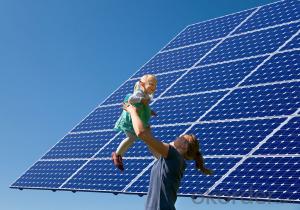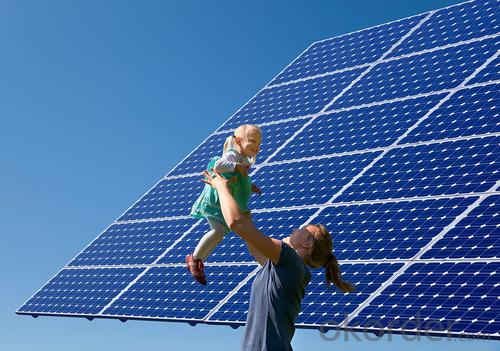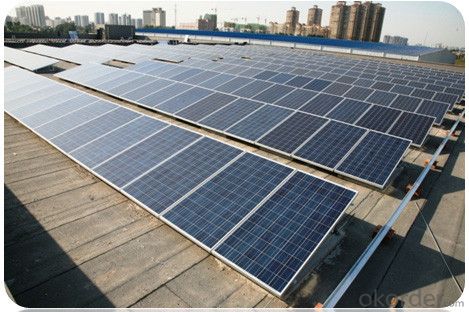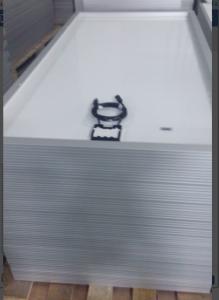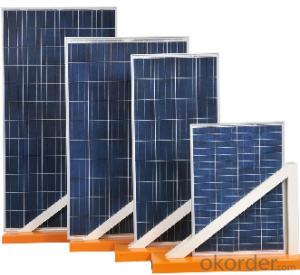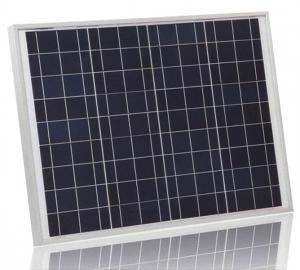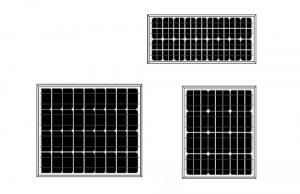Residental Solar Panels 250w Silicon Polycrystalline
- Loading Port:
- Guangzhou
- Payment Terms:
- TT OR LC
- Min Order Qty:
- 200000 watt
- Supply Capability:
- 20000000 watt/month
OKorder Service Pledge
OKorder Financial Service
You Might Also Like
INTRODUCTION
We are a high-tech group wich specializes in solar products design,research, manufacture, sales,solar projects design and installation.
Our national sales service covers seven parts, including northeast, north, east, middle, south, northwest and southwest, international sales covers five continents and over forty countries, including Germany, Italy, Spain, France, America and Brazil etc.
This installation Manual contains essential information for the electrical and mechanical installation that your must know before installing CUSTOMER PV modules. This also contains safety information you need to be familiar with .All the information described in this manual are the intellectual property of CNBM and based on the technologies and experiences that have been acquired and accumulated in the long history of CUSTOMER. This document does not constitute a warranty, expressed or implied.
CUSTOMER does not assume responsibility and expressly disclaims liability for loss, damage, or expense arising out of in anyway connected with installation, operation, use or maintenance of the PV modules. No responsibility is assumed by CUSTOMER for any infringement of patents or other rights of third parties that may result from use of PV module.
CUSTOMER reserves the right to make changes to the product, specifications or installation manual without prior notice.
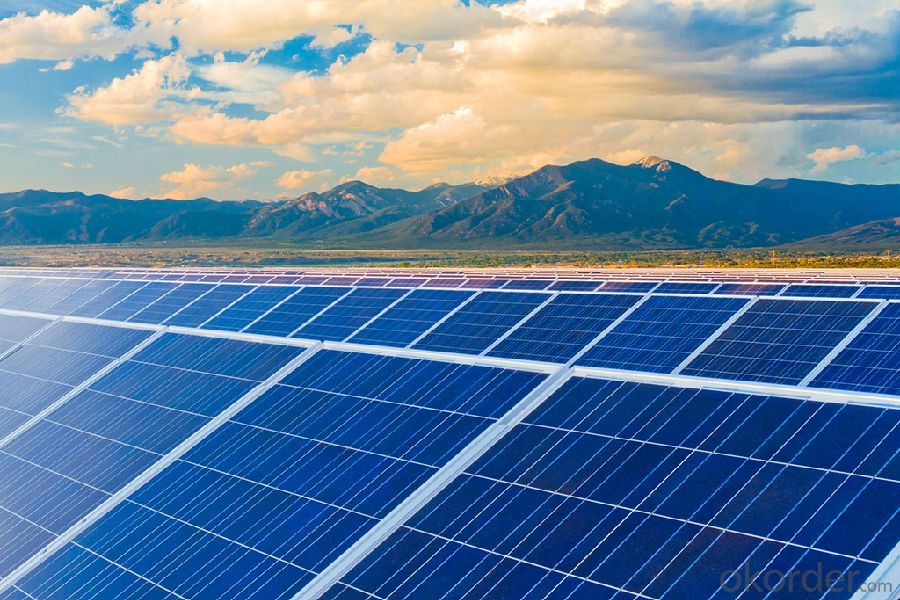
GENERAL INFORMATION
The installation of PV modules requires a great degree of skill and should only be performed by a qualified licensed professional, including licensed contractors and licensed electricians. Please be aware that there is a serious risk of various types of injury occurring during the installation including the risk of electric shock. All CUSTOMER modules are equipped with a permanently attached junction terminal box that will accept variety of wiring applications or with a special cable assembly for ease of installation, and they do not require assembly.
DATA SHEET
Maximum Power | 250W |
Efficiency | 0.154 |
Backsheet | White |
Frame Colar | Silver |
Manufacture Site | China |
Frame | Anodized Aluminum Alloy |
Weight | 19 kg |
FAQ:
Q1: Why buy Materials & Equipment from OKorder.com?
A: All products offered byOKorder.com are carefully selected from China's most reliable manufacturing enterprises. Through its ISO certifications, OKorder.com adheres to the highest standards and a commitment to supply chain safety and customer satisfaction.
Q2: What is a solar PV module?
A: A solar PV module consists of many solar cells that are connected together (typically in series) and packaged in a frame (typically made of aluminum).
Q3: What are the advantages and disadvantages of monocrystalline solar PV modules?
A: Monocrystalline solar PV modules are the most efficient type of solar PV modules, with the exception of CdTe thin film solar PV modules. As a result, monocrystalline solar PV modules are more expensive when compared to almost all other types of solar PV modules.
- Q: I am searching for producers or distributors of solar panels. Thanks!
- There are ton's of distributor around that can provide you a cheap solar panel that didn't came from China. Expand your knowledge and learn from a renowned solar company about the Best Solar Panels. Visit our site and contact us today!
- Q: I'm thinking of having solar panels to generate electricity. The drawbacks are that I'm afraid if it needs repair, I won't be able to find anyone. Also I'm afraid that the roof is not very accessible. If it is a new house, should the roof have a roof hatch? What can make the system not work?
- Modern solar electric panels rarely fail. Because of this, if you would be installing them over a roof that only has a few years left on it, it would be better to redo the roof, first. In the unlikely event that a panel needs to be changed, this can be done in 30 minutes or so, because the panels are mounted on racks, with everything simply plugging together. I have never personally seen a solar installation go bad, but from what I hear, the inverter (a box that goes in next to your electric service panel) is usually what burns out after 5 years, assuming the install was done right in the first place. If you were to call roofers to repair your roof, they would somehow be able to get to your roof, by ladders, or a special truck. Solar installers use the same kind of equipment. They won't have a problem getting up there. A solar electric system is actually a very straightforward thing. No matter who installs it, if there is a problem, another installer should be able to diagnose and fix it.
- Q: Can solar panels be used in deserts?
- Yes, solar panels can definitely be used in deserts. In fact, deserts are considered ideal locations for solar power generation due to their high solar irradiance and vast open spaces. The availability of ample sunlight allows solar panels to efficiently convert sunlight into electricity. Additionally, deserts often have less cloud cover and atmospheric interference, resulting in more consistent and predictable solar energy production.
- Q: What in the solar panel wares out so that the panel can not convert the suns energy to electric energy? Please post were you get answers.
- If they get smashed, they won't work. Keep them clean, and they will last many years. I suppose there is a 'limit' to the effectiveness of the cells lifespan, but it must be more than 25-30 years. Just glass, metal frame and silica. No moving parts. Seems like a good deal.
- Q: If my school uses 88240kWh of electricity per month and I have 000 50W solar panels running for 6 hours a day, does it mean it will take 88240kWh / {{[(50W x 3600s)*000]/000}kWh x 6} number of hours to generate that much electricity (88240kWh)?
- your first question: Does a 50W solar panel generate 540kWh? 540 kW-hr / 50W = 3600 hours it would take that long for the panel to generate that amount of energy. your second question is confused, as you both stipulate the number of hours at 6 hours per day, and you try to solve for the number of hours. 000 x 50w = 50 kW 50 kW x 6 hr/day x 30 day/mo = 27000 kW-hr/mo = 27 MW-hr/mo that is the amount of energy generated. That is nowhere close to 88240 kWh or 88 MW-hr. I would take 7 times more solar panels to generate that much energy. .
- Q: Can solar panels be installed on swimming pools?
- Yes, solar panels can be installed on swimming pools. Solar panels can help to power pool pumps, heaters, and other equipment, reducing energy costs and making pools more energy-efficient.
- Q: I have a home made 24 volt electric cart. It is powered by two 2Volt deep cycle batteries. Since the motor runs on 24 volts the batteries are wired in series to produce the 24 volts. I only have a 2 volt battery charger, but I also have two 2 volt solar panels. It is a pain having to unhook wires, rewire it, or charge them one at the time.HERE IS THE QUESTION REALLY... Can I wire the two 2 volt solar panels together in series (ie: negative to positive) then connect it to the existing 24 volt system and have it charge the batteries fine. I know basic wiring, but I know nearly nothing about solar panels, will it work fine? will it cause them to break? or short out?(additional info, the solar panels are only rated at 5 amps so it will not overcharge the batteries or anything)
- Stephen is sweet in you should adventure the enter criteria of your inverter. so that you'll want to cord a minimum of a few cells in series. probable you should custom-go with a blend of series and parallel for the cells. operating example, if maximum of your fragments grant a million amp, then you actual ought to objective a million amp for the array. If there's a fragment that's 0.7 amp, and yet another that's 0.3 amp, you should parallel those, and count number them as one cellular, that you'll then series with the others. I observed this performed on one individual's panel years and years in the past. It gave the impression of an poor mess, and extremely some artwork, because the cells couldn't be in neat rows, anymore. also, if plausible, you should want the utmost equipment voltage you should use, because meaning decrease amperage for an same potential, and to that end smaller cord. 8 amps, after derating, skill #2 or #4 cord, an same variety that must be used to cord your position. 5 amps skill #0 or #8, and one hundred amps skill a fat cord like the jumper cables for a vehicle. in basic terms so that you comprehend, i trust that's typically unlawful contained in the U. S. to connect a selfmade array to a grid-tied equipment, or to apply a grid-tied inverter that plugs into the wall socket, in case you care.
- Q: Any recommendations for companies? Any things to look out for?
- It depends upon how you look at things. If you are looking for a decent return on investment, or a business decision, it is probably very unwise. In most cases people would see a far better return in upgrading insulation in ceilings, walls, and windows to much better insulation than they currently have, followed by proper resizing heating and air conditioning to smaller unit size to fit their lesser need as a result of the insulation. The heat an air conditioning units should be the highest efficiency available. The return on the above can make a positive and economic investment in many cases. If you have done the above first, and have money to spend and do not care about the return on it, then you can play with solar or wind. However, typical cost of generation of solar and wind energy is about $0.22 / KWH and you can purchase from utility at about $0.0/ KWH including generation and distribution so this is not all that prudent.
- Q: Can solar panels be used for powering an electric fence?
- Yes, solar panels can be used to power an electric fence. Solar panels convert sunlight into electricity, which can be stored in batteries or used directly to power various devices, including electric fences. This off-grid solution is eco-friendly and cost-effective in areas without access to electricity.
- Q: I would like to know how much a solar panel would cost for a wingspan of 208 ft for a plane
- That okorder /
Send your message to us
Residental Solar Panels 250w Silicon Polycrystalline
- Loading Port:
- Guangzhou
- Payment Terms:
- TT OR LC
- Min Order Qty:
- 200000 watt
- Supply Capability:
- 20000000 watt/month
OKorder Service Pledge
OKorder Financial Service
Similar products
Hot products
Hot Searches
Related keywords

